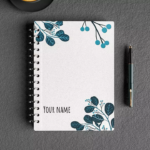In the realm of online invitation card printing, print finishing plays a pivotal role in enhancing the visual appeal and durability of the final product. From adding luxurious touches to ensuring longevity, print finishing options offer a myriad of possibilities to elevate your invitation cards.
Importance of Print Finishing
Print finishing is not merely a final touch; it is an integral part of the printing process that significantly impacts the overall look and feel of invitation cards. By carefully selecting appropriate finishing techniques, you can enhance the design, texture, and perceived value of your cards, making them more appealing to recipients.
Types of Print Finishing
There is a wide array of print finishing techniques available for online invitation card printing, each offering unique benefits and effects. From glossy and matte finishes to foil stamping and embossing, exploring different finishing options allows you to customize your cards according to your preferences and design requirements.
Glossy vs. Matte Finishes
Understanding Glossy Finishes
Glossy finishes impart a shiny, reflective surface to invitation cards, creating a sleek and polished appearance. These finishes are ideal for designs that aim to convey a sense of elegance and sophistication. Additionally, glossy finishes can enhance the vibrancy of colors and images, making them more visually striking.
Exploring Matte Finishes
Matte finishes, on the other hand, offer a subtle, non-reflective surface that exudes understated sophistication. Matte finishes are preferred for designs that prioritize a soft, tactile feel and a muted aesthetic. These finishes are particularly suitable for minimalist or vintage-inspired invitation card designs.
Foil Stamping and Embossing
Incorporating Foil Stamping
Foil stamping is a luxurious finishing technique that involves applying metallic or colored foil to specific areas of the invitation card design. This technique adds a touch of opulence and glamour, making foil-stamped invitation cards stand out and command attention. Foil stamping is often used to highlight text, graphics, or decorative elements.
Enhancing with Embossing
Embossing is a print finishing technique that creates raised or recessed relief patterns on the surface of invitation cards. By adding texture and dimensionality to the design, embossing lends a tactile quality to the cards, making them more engaging to touch and interact with. Embossing can be used to accentuate intricate details or add decorative flourishes to the design.
Spot UV Coating
Introduction to Spot UV Coating
Spot UV coating is a finishing technique that involves applying a glossy, transparent coating to specific areas of the invitation card design. This coating creates a contrast between the glossy and matte surfaces, resulting in eye-catching visual effects. Spot UV coating is often used to highlight logos, text, or graphic elements, adding emphasis and depth to the design.
Applications of Spot UV Coating
Spot UV coating offers endless possibilities for creative expression in invitation card design. From creating subtle accents to making bold statements, spot UV coating can be used to add texture, shine, and dimensionality to the cards. Whether used sparingly or applied generously, spot UV coating adds an element of luxury and sophistication to invitation cards.
Die-Cutting and Laser Cutting
Implementing Die-Cutting Techniques
Die-cutting is a versatile finishing technique that involves cutting out custom shapes or designs from invitation cards. This technique allows you to create unique and intricate designs that are not possible with traditional cutting methods. Die-cutting adds visual interest and novelty to invitation cards, making them more memorable and distinctive.
Advantages of Laser Cutting
Laser cutting offers precision and flexibility in cutting intricate designs with utmost accuracy. This technique allows you to achieve highly detailed and complex shapes, patterns, and text elements in invitation card designs. Laser cutting is particularly suitable for creating delicate lace-like patterns, intricate filigree designs, or intricate typography.
Laminating Options
Understanding Lamination
Lamination is a protective finishing technique that involves applying a thin layer of plastic film to the surface of invitation cards. This film provides a durable and waterproof coating that protects the cards from damage due to handling, moisture, or fading. Lamination also enhances the colors and clarity of the printed design, making it more vibrant and long-lasting.
Types of Laminating Films
There are various types of laminating films available for online invitation card printing, each offering specific benefits and properties. Glossy laminating films provide a shiny, reflective surface that enhances the vibrancy of colors and images. Matte laminating films offer a subtle, non-reflective surface that adds a soft, tactile feel to the cards. Other specialty laminating films, such as velvet or soft-touch laminates, provide unique textures and finishes that elevate the look and feel of the cards.
Conclusion: Elevating Your Invitation Cards
In conclusion, exploring print finishing options opens up a world of possibilities for enhancing the visual appeal, texture, and durability of online invitation cards. Whether you prefer glossy or matte finishes, foil stamping or embossing, spot UV coating or die-cutting, each finishing technique offers its unique charm and aesthetic appeal. By carefully selecting and combining different finishing options, you can create invitation cards that not only impress recipients but also leave a lasting impression. With ARC Print India‘s expertise and advanced printing capabilities, you can bring your vision to life and create invitation cards that stand out from the crowd.





